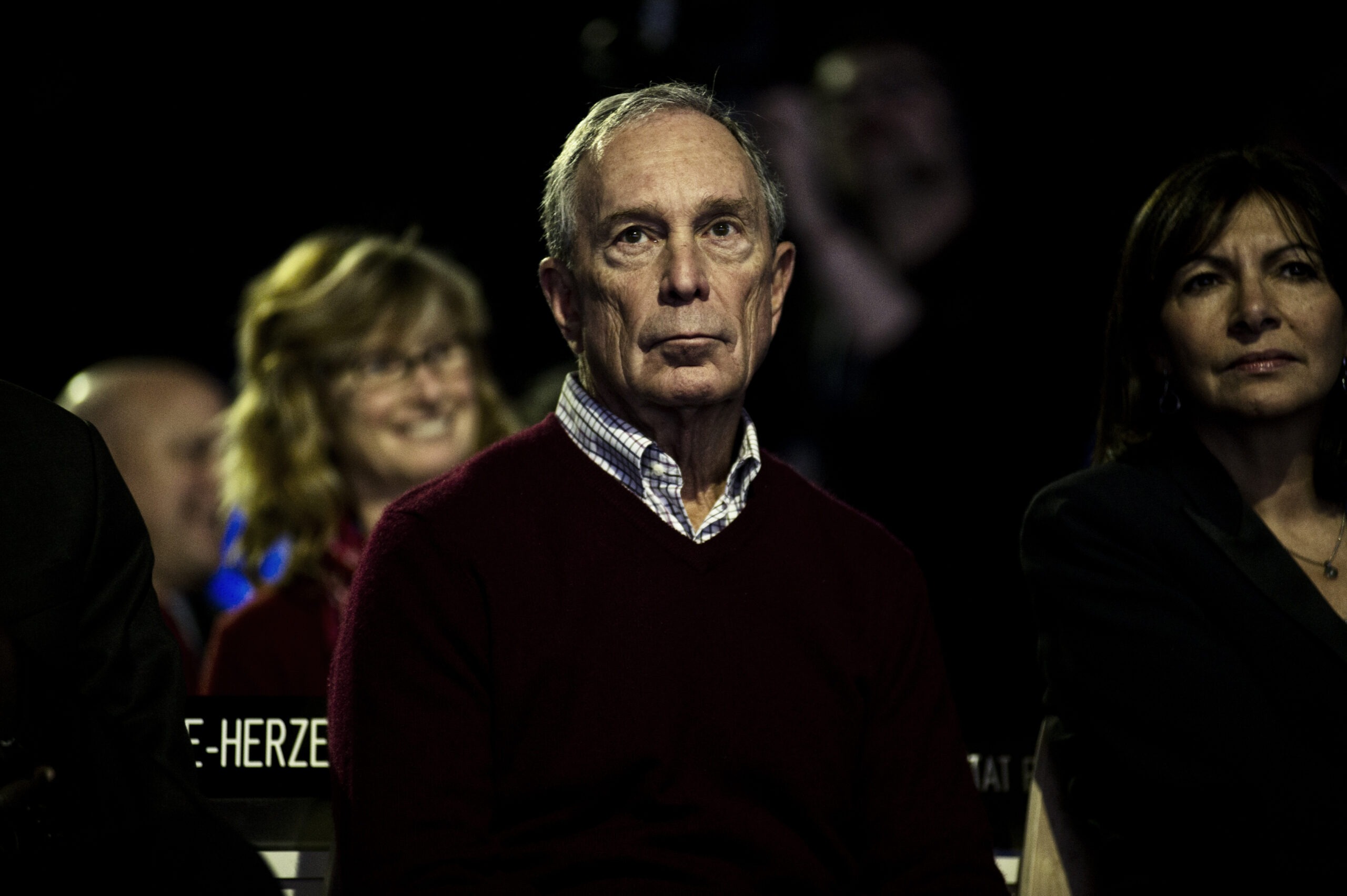Michael Bloomberg, the 108th Mayor of New York City, served from 2002 to 2013. A period marked by significant challenges, including the aftermath of the 9/11 attacks, his tenure was characterized by a series of ambitious and often controversial policies. Bloomberg’s approach to governance reshaped New York City in various fundamental ways. This post delves into the key areas where his policies had the most significant impact.
1. Economic Development and Diversification
During Michael Bloomberg’s tenure as Mayor of New York City, economic development and diversification were at the forefront of his agenda. Recognizing the challenges posed by the evolving global economy and the aftermath of the 9/11 attacks, Bloomberg’s administration took decisive steps to rejuvenate and reshape the city’s economic landscape. These efforts ranged from revitalizing impacted areas to nurturing emerging sectors, all aimed at strengthening the city’s economic resilience and global standing.
Post-9/11 Recovery
Bloomberg’s leadership was instrumental in the post-9/11 era, focusing on the revitalization of Lower Manhattan. This area, deeply affected by the tragedy, was transformed from a largely business-oriented environment into a thriving, diverse neighborhood. This transformation included not only the reconstruction of the World Trade Center site but also the development of residential areas, retail spaces, and cultural institutions, thereby reinvigorating the area’s economy and community spirit.
Tech Industry Boost
Recognizing the potential of the technology sector, Bloomberg’s administration put forth significant efforts to establish New York City as a leading tech hub. By fostering an environment conducive to the growth of tech startups and attracting technology giants, the city challenged Silicon Valley’s dominance in the tech sphere. Initiatives included investing in infrastructure, providing support and resources for startups, and promoting education and training programs in technology and related fields.
Tourism Enhancement
Under Bloomberg, there was a concerted effort to elevate New York City’s status as a top global tourist destination. This was achieved through extensive marketing campaigns and the development of infrastructure aimed at enhancing the visitor experience. Key initiatives included the improvement of tourist attractions, the promotion of cultural and recreational events, and the enhancement of visitor services. These efforts not only boosted tourism but also contributed significantly to the city’s economy and international profile.
2. Public Health Initiatives
Mayor Bloomberg’s tenure was not only about economic and urban development; it was also marked by a strong commitment to public health. His administration took bold and sometimes contentious steps to address health-related issues, with a focus on preventative measures. These initiatives were designed not just to improve the health and well-being of New Yorkers but also to set new standards in public health policy. These policies not only transformed the health landscape of New York City but also inspired similar actions in cities and countries around the world.
Smoking Ban
The ban on smoking in all indoor workplaces, including bars and restaurants, was a landmark public health initiative by Bloomberg’s administration. This bold move was initially met with resistance but later gained widespread acceptance as it effectively reduced secondhand smoke exposure, contributing to a broader cultural shift towards smoke-free environments. The success of this policy in New York City served as a model for many other cities globally, demonstrating the potential impact of municipal health policies.
Trans Fat Ban and Calorie Counts
In a pioneering move, Bloomberg’s administration banned trans fats in restaurant food, a policy aimed at combating heart disease and other health issues related to poor diet. Alongside this, the requirement for calorie counts on menus in fast-food and chain restaurants was implemented, empowering consumers with information to make healthier choices. These measures, though controversial at the time, highlighted the role of policy in shaping public health and were later emulated in various jurisdictions, reflecting their significance and effectiveness.
3. Education Reforms
Education reform was a cornerstone of Michael Bloomberg’s agenda during his mayoralty. Recognizing the critical role of education in the long-term prosperity and well-being of the city, Bloomberg embarked on a series of ambitious reforms to overhaul New York City’s public education system. These reforms were characterized by a move towards centralized control, the expansion of charter schools, and an increased reliance on standardized testing as a metric for performance. Each of these initiatives reflected a broader vision to enhance educational outcomes and to prepare students more effectively for the challenges of the 21st century.
Mayoral Control of Schools
One of Bloomberg’s most significant and contentious education reforms was assuming mayoral control of the city’s public schools. This move marked a dramatic shift from the decentralized Board of Education system to a more centralized model, allowing for more direct oversight and the implementation of uniform policies across the city’s schools. This change provided the Bloomberg administration with the leverage to implement broad policy changes and to attempt to address long-standing issues such as performance disparities and resource allocation.
Charter School Expansion
Bloomberg was a fervent advocate for charter schools, believing in their potential to provide innovative and high-quality education, particularly in underserved communities. Under his administration, the number of charter schools in New York City saw a significant increase. This expansion was part of a broader strategy to offer parents and students more choices and to introduce new models of teaching and school management into the public education system.
Standardized Testing Emphasis
The Bloomberg administration placed a heavy emphasis on standardized testing to evaluate student achievement and school performance. This approach was aligned with the broader national trend towards accountability in education. The administration argued that standardized tests provided objective data to assess and improve student learning outcomes. However, this focus also sparked debate and criticism from some educators and parents, who felt that it could lead to a narrow focus on test preparation at the expense of a more holistic educational experience.
4. Environmental Policies and Sustainability
Environmental sustainability and resilience were key components of Mayor Michael Bloomberg’s vision for New York City. Understanding the pressing need to address environmental challenges and climate change, Bloomberg’s administration implemented forward-thinking policies and initiatives. These efforts were focused not only on making the city more sustainable and livable but also on positioning it as a global leader in urban environmental management. Two standout initiatives from his tenure were PlaNYC, a comprehensive sustainability plan, and the push towards greener buildings and the development of public spaces.
PlaNYC
PlaNYC was an ambitious and holistic sustainability plan launched under Bloomberg’s leadership. This initiative was designed to prepare New York City for an expected increase in population, with a strong emphasis on sustainability and quality of life. PlaNYC encompassed various components, including reducing greenhouse gas emissions, improving transportation infrastructure, ensuring a reliable energy supply, and enhancing the city’s natural and built environments. The plan represented a groundbreaking approach to urban planning, integrating environmental goals with economic and social ones, and set a precedent for other cities around the world.
Greener Buildings and Public Spaces
Bloomberg’s environmental policies also emphasized the greening of buildings and the creation of new public spaces. This involved implementing standards and incentives to make existing buildings more energy-efficient and environmentally friendly. Additionally, under Bloomberg’s tenure, neglected and underused urban spaces were transformed into vibrant public areas. A notable example is the High Line, an abandoned elevated railway line that was repurposed into an innovative public park. These initiatives not only enhanced the city’s aesthetic and recreational offerings but also contributed to its environmental sustainability and the wellbeing of its residents.
5. Crime Reduction and Law Enforcement
Crime reduction and law enforcement strategies were prominent aspects of Michael Bloomberg’s mayoralty in New York City. His administration’s approach to policing was characterized by the continuation and expansion of certain policies inherited from previous administrations, notably the “broken windows” theory of policing. While these policies were credited with contributing to a decline in crime rates, they also sparked significant controversy and debate, particularly around issues of civil liberties and racial profiling. Two of the most notable and contentious policies under Bloomberg were the continuation of the “broken windows” approach and the extensive use of the stop-and-frisk tactic.
Continuation of the “Broken Windows” Policy
The “broken windows” policing strategy, which focuses on addressing small crimes to prevent larger ones, was a key element of Bloomberg’s approach to law enforcement. This theory operates on the premise that maintaining order in urban environments, by cracking down on minor offenses like vandalism or public drinking, can prevent more serious crimes. Under Bloomberg, this policy was pursued with the belief that it would contribute to overall crime reduction and enhance the quality of life in the city.
Controversial Stop-and-Frisk Policy
One of the most contentious aspects of Bloomberg’s crime reduction strategy was the extensive use of the stop-and-frisk policy. This practice involved police officers stopping, questioning, and frisking individuals they suspected of involvement in criminal activity. While the administration argued that this policy was an effective tool for crime prevention, it faced intense criticism and legal challenges. Critics argued that stop-and-frisk disproportionately targeted minority communities, leading to allegations of racial profiling. The policy’s implementation was eventually deemed unconstitutional in its form at the time, prompting a reevaluation and significant modifications in subsequent years.
6. Urban Development and Housing
Urban development and housing were key areas of focus during Michael Bloomberg’s tenure as mayor of New York City. His administration was marked by an aggressive approach to urban development, involving large-scale projects aimed at revitalizing and transforming various parts of the city. Alongside these developments, Bloomberg also addressed the critical issue of affordable housing, though his efforts in this area were met with mixed reactions. The administration’s initiatives in urban development and housing were aimed at shaping the city’s skyline, boosting the economy, and addressing the housing needs of its diverse population.
Large-Scale Development Projects
One of the hallmarks of Bloomberg’s mayoralty was the initiation and completion of several major development projects. Among these, the Hudson Yards redevelopment stands out as a prime example. This project, one of the largest private real estate developments in the United States, transformed a significant portion of Manhattan’s West Side. It included the creation of new commercial, residential, and public spaces, contributing to the city’s economic growth and urban revitalization. These development projects were part of Bloomberg’s broader vision to modernize the city’s infrastructure and enhance its global stature.
Affordable Housing Initiatives
Recognizing the growing challenge of housing affordability in New York City, Bloomberg’s administration launched several initiatives aimed at increasing the availability of affordable housing. These efforts included plans to build and preserve affordable housing units across the city. However, despite the scale of these initiatives, critics argued that they were insufficient in addressing the magnitude of the city’s housing crisis, which continued to escalate with rising rents and gentrification. The affordable housing challenge remained a contentious and unresolved issue, highlighting the complexities and difficulties in balancing development with the needs of a diverse urban population.
Conclusion:
Michael Bloomberg’s tenure as mayor was marked by bold policies that aimed to transform New York City. While his approach garnered both praise and criticism, the Bloomberg years undeniably left an indelible mark on the city’s economic landscape, public health, education system, environmental initiatives, law enforcement, and urban development. The Bloomberg legacy is a complex tapestry of achievements and controversies, reflecting the challenges of governing one of the world’s most dynamic cities.



